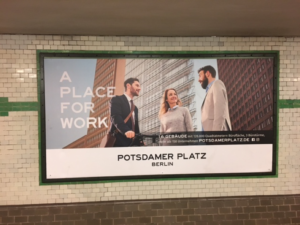Picture 1: The Historic Traffic Light in the middle of Potsdamer Platz.
At the heart of the city stands Potsdamer Platz. High-rise buildings surround the square with bright lights and an exuberant energy. Here you can feel Berlin buzz with life. Yet this has not always been the case. This square was once a wasteland and served to separate the city of Berlin. Today Potsdamer Platz reminds visitors of the city’s turbulent history while simultaneously celebrating Berlin as a world city—famous for its culture, diverse architecture, renowned universities, and more.
Potsdamer Platz was originally a crossroads outside of the city wall. It was rapidly developed into an economic and cultural hub in the early 1900’s as wealthy Berliners began to settle beyond the city walls. In the 1920’s, Potsdamer Platz quickly became the busiest traffic knot in Europe which led to the erection of the first traffic light on the continent. The square was home to high end entertainment, grand hotels, and the cultural elite of Berlin.
Just as quickly as the square burst into life, was it blasted into oblivion. Potsdamer Platz was almost entirely destroyed during World War II and would remain a wasteland until the 1990’s. In 1961 Potsdamer Platz was no longer a bustling crossroads, but rather a dead end. The Berlin Wall was erected through the square and all of the buildings that remained were torn down. For 28 years, Potsdamer Platz was the widest point of the Wall’s “death strip”. The barren divide not only prevented the movement of people and products, but the exchange of ideas and values as well.
Picture 2: The Bahnhof Station with a market surrounding it, November 2017. Potsdamer Platz
When the wall fell, architects and large companies jumped at the opportunity to rebuild Potsdamer Platz and establish their place in Berlin’s city center. Today the square blends practical living and working opportunities with world-class entertainment, food, shopping, and cultural experiences. The Sony center is a Berlin skyline-landmark and offers visitors a cinema, restaurants, a film museum, living space, and offices while functioning as Sony’s European headquarters. Adjacent to the Sony Center is the Deutsche Bahn high rise that towers over one of Berlin’s main transport hubs. Potsdamer Platz is easily accessible by underground, rapid transit train, automobile, and by foot which makes it a difficult site to miss when visiting or living in Berlin. The accessible nature of Potsdamer Platz makes it a natural meeting space within the city.
For residents of Berlin, Potsdamer Platz provides nearly all of the daily living essentials: shopping, grocery, transportation, offices, living space, and entertainment. The space also invites tourists to explore Berlin with its wide range of food and entertainment offerings. Visitors can find a piece of home at Potsdamer Platz while also exploring the history and diverse culture Berlin has to offer. The first, and most obvious, reminder of Berlin’s turbulent past are the segments of the Berlin Wall that remain in the central square. Here visitors can read about the history of Berlin as a divided city and its reunification in 1989. A brick line also cuts through the square to denote where the wall used to stand. Though remainders of the wall act as a reminder of Berlin’s darker past, other historical monuments and markers along with the new architecture celebrate the city as a cultural hub and international city. Beyond the Berlin Wall, a replica of Germany and Europe’s first traffic light tower is located on the corner of the central intersection. As the light changes from red to green, it celebrates Berlin’s history as a major trade and cultural hub in Europe. Overall Potsdamer Platz creates an inviting environment in which the history of Berlin is seamlessly integrated with the charismatic and international nature of the city today.
Photos 3 and 4: Advertisements for Potsdamer Platz in the U-Bahn.



